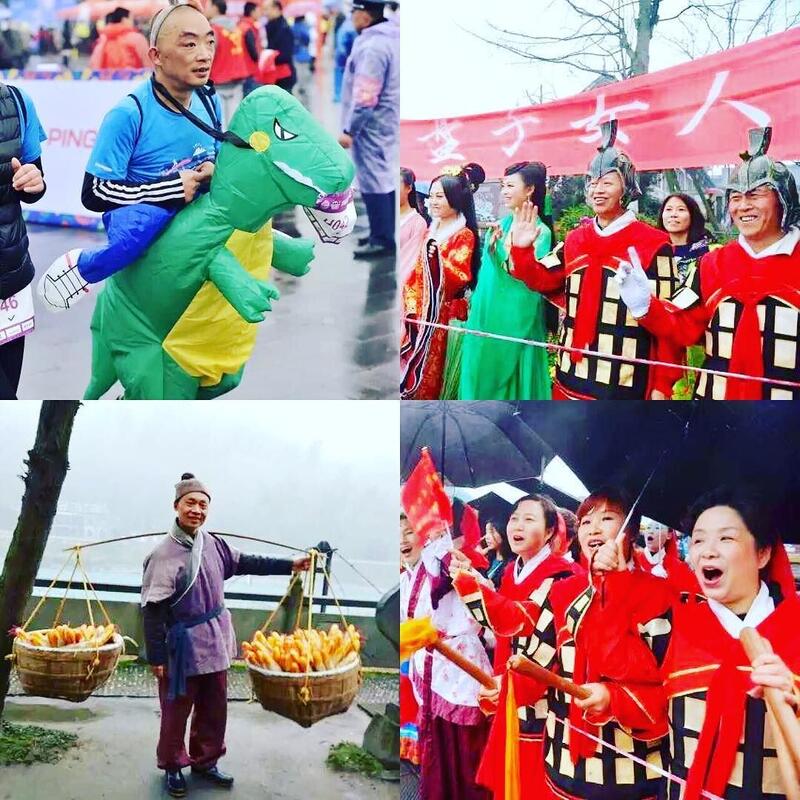
As I ran down the hill and towards mile maker “24 km,” I imagined the journey to come. A sense of relief entered my mind. I’d finished over half of the race (15 miles) and a mere 18km remained.
Sure, I’d never run anywhere near this distance before, and I’d only been running consistently for about a year. But I was determined, I had trained, and I was going to make it. In spite of the obstacles, both physical and mental, I was on my way to completing my first marathon in China.
The marathon I had chosen was the aptly titled, Chengdu Panda Marathon, a pristine marathon that twisted around the mountains and rivers of Mount Qingcheng and Dujiangyan, two UNESCO Heritage sites dating back to 250 BC.
As I neared the sign, I just had to remember one thing: Don’t Turn Left at 24km. I repeated the message to myself, “Don’t Turn.” That’s all I had to do.
I turned left. It was Friday, and with two days to go before the actual event, I turned and headed towards my home. A bit over a year before, I’d bought a house here in Qingcheng Mountain, one of the most revered of Taoist mountains, and I’d started running at about that time too.
At the foot of this mountain, I’d started a new journey, a journey of running. Training had taken me to nine countries and on nearly 200 runs. I’d clocked over 150 hours and 1400 kilometers running to get here. All of this lead me back to my new home, Qingchengshan.
This was more than just a run; it was homecoming.
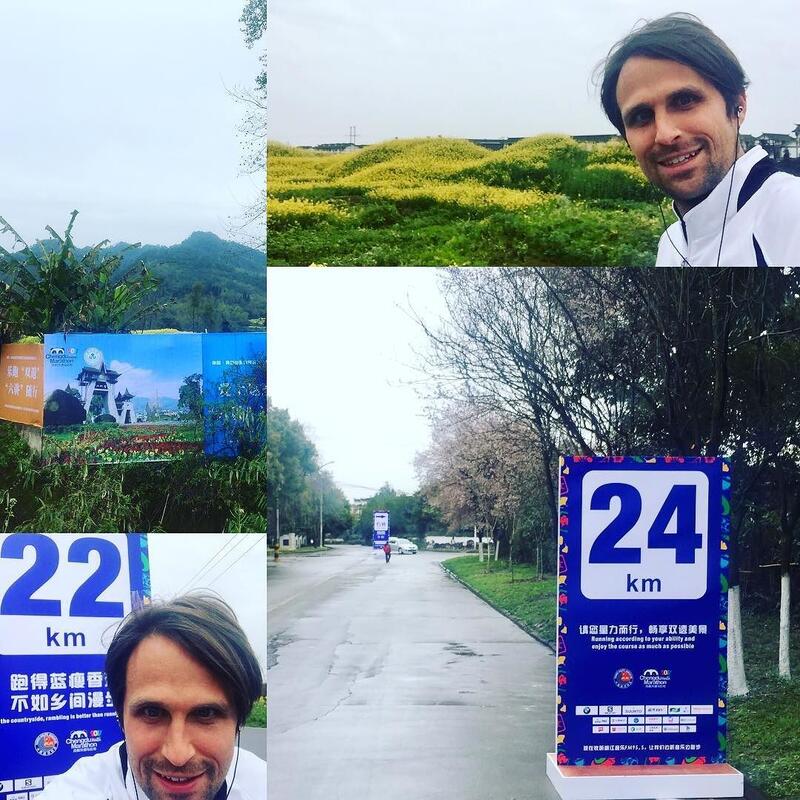
Out of Breath
Hangzhou, China (November 2015):
“I’m gonna miss my train,” I screamed to myself mentally. The combination of underestimating how much time I needed and traffic delays meant I was late. Bag in hand, I hustled up the escalators and through the security check point. I then ran (or whatever the equivalent term is for an out-of-shape, sedentary computer programmer moving at peak speed) to the departure gate.
Sadly, the gate had already closed. Trains generally depart on time in China, and I had missed my train.
I walked away, red faced, winded and mind-flustered. No one to blame but myself, as I headed to the ticket gate to exchange my ticket.
On one side, I had made a tactical error. I hadn’t given myself enough time to get to the train station. On the other side, I realized my body and health were not in great shape. This second realization hurt more than the first.
I was in my early thirties, but I could barely manage a sustained “run” before puttering out-of-shape and out-of-breath.
My business trip continued onward for several more days and a few more cities. But this realization of how I couldn’t run anymore stuck with me. It got me thinking, and when I got back to my countryside house outside Chengdu a couple weeks later, I started running.
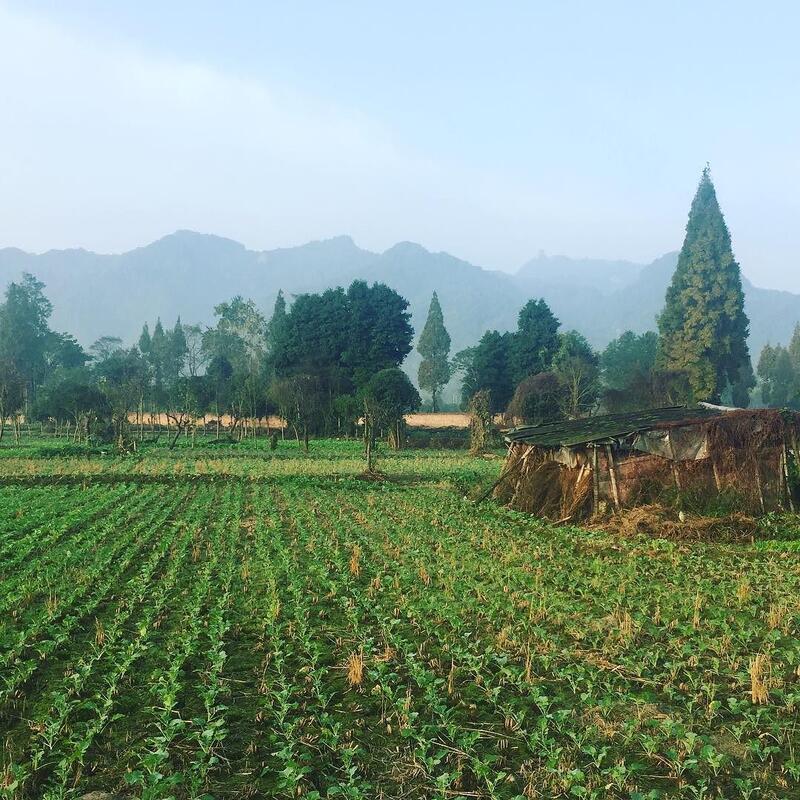
First Paces
Qingchengshan, Duijiangyan, Chengdu, Sichuan China
In Tao Te Ching, the ancient Chinese philosopher and writer Lao-Tzu is attributed to the much quoted expression, “A journey of a thousand miles begins with a single step” (Chinese: 千里之行,始於足下). For me, that single step was out my door and towards a park at the foot of Qingcheng Mountain.
My first goal was getting to 5k or about 3.12 miles, and, with an app to guide to me, my running journey started with a mix of walking and running steps. I’d run for a minute or two and then walk for a minute or two. Even at this pace, I’ll admit that even this was hard. My body didn’t know how to handle this kind of gentle running.
After a mere 20 minute workout and only about 8 minutes of it running, I laid on the grass panting. My heart rate was elevated. I was sweating. And a pained ache crept over my mind and body.
“Can I really do this?” I asked myself. I relooked at the app and its plan to get me to 5k, and I realized that was a mere 2 months and some 23 workouts away from reaching this goal. I would continue on.
Over the next three months, I completed the remaining workouts. There were a few breaks due to work travel and poor air quality and a few failures, but on Feb 6, I ran for 35 minutes straight and completed my 5k. I was sweating and panting as I heaved my way homeward at the end of the run. Unlike my first run of a mere few minutes, I’d run non-stop for the full duration.
I was finally running. I learned a lot of lessons about myself and running, even on this first 5k. I learned that you have to walk to run and, like Lao-Tzu, so famously said, a journey of a thousand miles does start with a single step.
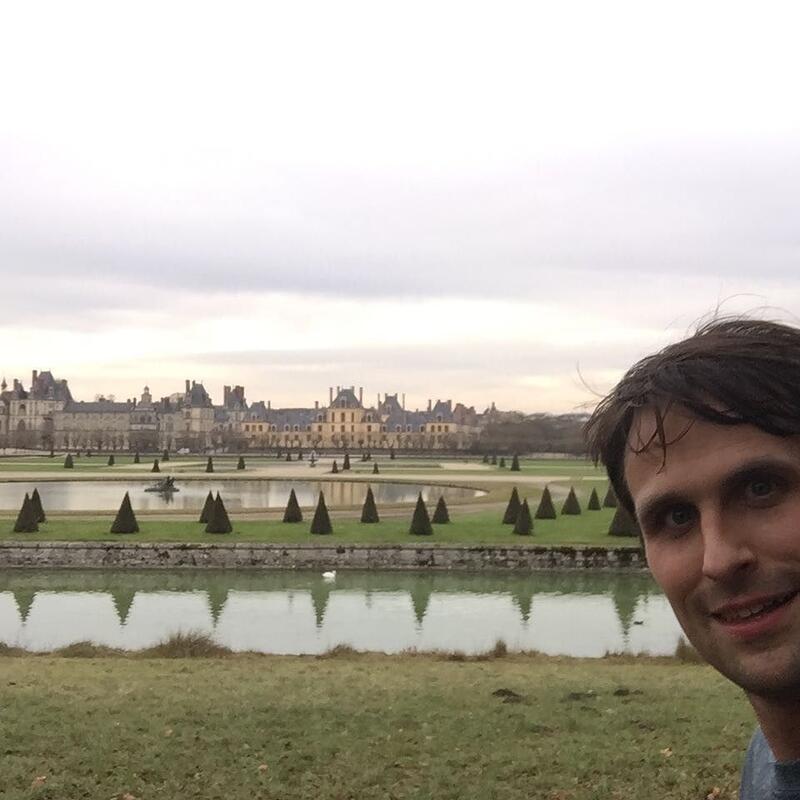
Run the World
Japan, China, Taiwan, Cambodia, Thailand, USA, France, Portugal and Belgium:
But my journey didn’t end with that last step; it only continued.
An interesting thing happened following my first 5k, I started to enjoy the act of running. Not only did it let me express myself physically, but it got me outside to enjoy the sun, the rain, the clouds, and all of nature’s wonderland. I started sleeping better, eating better, and was even more productive.
My body was far from developed to run regularly yet, and I suffered some typical running injuries and aches, but my training for the 5k had created a running habit. I liked running.
This running habit took me on a journey around the world, and over the following year I would run in a dozen or so cities in 9 different countries. As my entrepreneurial and personal travels took me to new places, I took my running gear and explored these new cities on my two feet, running.
I started to look at these trips as an opportunity to run in new places. And what a wonderful world it was:
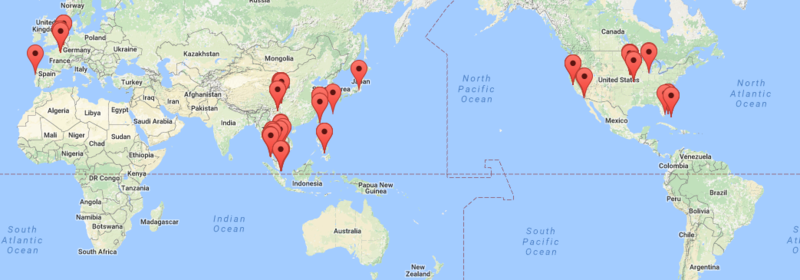
- In Taipei, Taiwan, I circled Daan Park with its mix of plant life and park-goers.
- In Okinawa, Japan, a light rain sprinkled me as a ran along the boardwalk in the tranquil beach town of Chatan.
- In San Francisco, I scaled Twin Peaks to peer down at the city and the Golden Gate Bridge below.
- In France, I explored the old forest trails of Fontainebleau and reveled in classic architecture of Paris’ bridges, palaces, museums and churches.
- In Porto, Portugal, I crossed the fabled old city to Atlantic Ocean’s breezes and beaches.
- In Brussels, Belgium, I braved cold, cloudy days as I circled its hilly cobbled stones and buildings of old.
- In Thailand, I sweated my way amongst monkeys and mopeds in the beach island of Koh Lanta.
- In Cambodia, my eyes widening as I greeted dawn at Ankor Wat before heading out on an adventurous 20k run amongst the temples in Siem Reap.
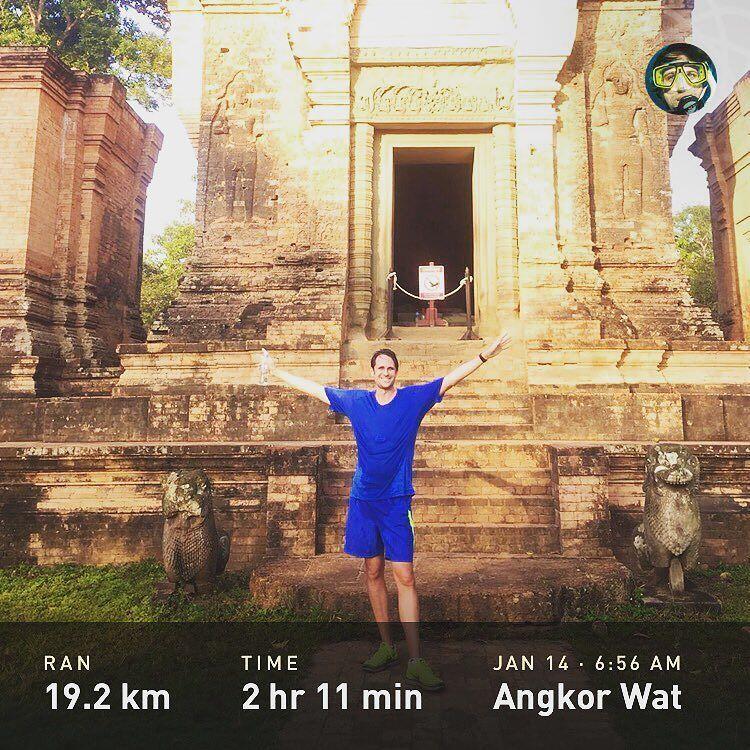
What a wonderful world it was!
Most of these runs were exploratory. It was my way to explore the world. At the same, I started to push myself a bit farther and a bit faster. 5k turned into running 10k, and 10k turned into 15k. More and more my running turned into serious training. And so began the next step of my journey.
The Commitment
Qingchengshan, China:
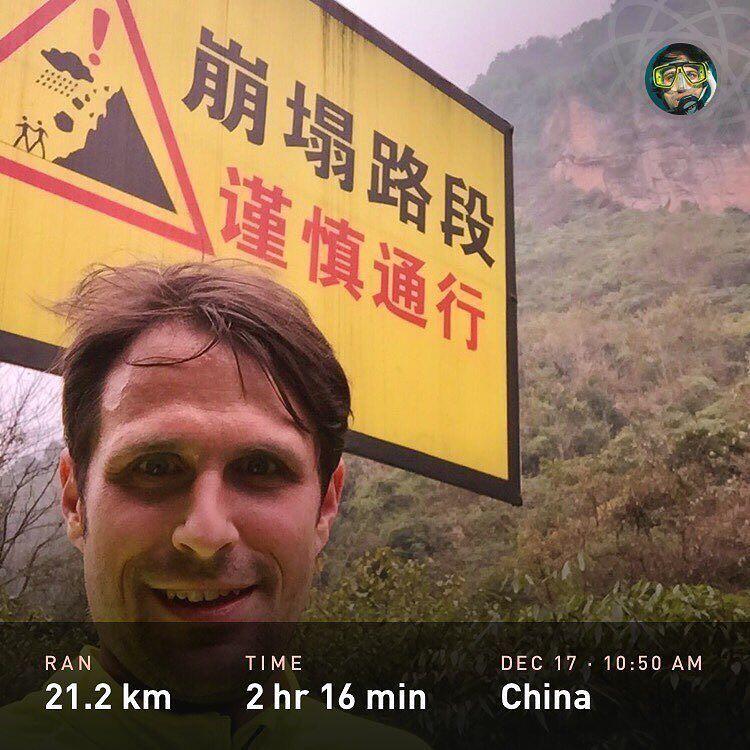
While my trips around the world were amazing memories, my year of running around the world always brought me back to my mountain town in Western China. Even after a year, Qingchengshan still had plenty of surprises for me.
The mountain paths and farm trails surrounding it kept pulling at me to see where I’d end up if I turned right or left on that new paths. Rice paddies opened into small shrines and temples. Curves in the path lead to new crevices of the human conditions.
When people ask, I always like to tell people that traveling is more of a mindset than a movement to a new place. Newness is simply subjective openness. You can find new places, people and experiences in a place you visit everyday. I was still finding new things in this old mountain.
In August 2016, as I flew back from San Francisco to Chengdu, I started to ponder a new challenge, which I scribbled into my notebook in block letters as: Run the Chengdu Marathon. That was it. I had verbalized the next step in my journey as a runner.
The Program: Canadian Coaching and Real Training
The next step I took was to message a Canadian entrepreneur friend, Nathan Monk, who I knew was a regular runner. As luck would have it, Nathan was starting the second pilot batch of his running program, NOMADIC, and he invited me to join the program. In the moment where I was looking at standard running programs and worrying if this was even feasible, I landed on a coach who would guide me virtually over the coming months from a poor newbie running to crossing that 42k line.
After a series of emails and Skype chats, we discussed his training program and my running goals. Finally, Nathan scheduled a few runs to get me started and began to track my progress.
The NOMADIC running program is highly individualized program focused on building several key foundation aspects for long distance running while adapting to a runner’s needs.
The first phase is focused on Aerobic Conditioning. So I would be building up my endurance base. Most of what we did was run longer and farther each week. At the same time, Nathan’s mantra was about learning to listen to our bodies. Underlying that mantra was a quest to understand recovery, avoid overtraining, and find your pace.
Throughout Nathan’s program, he shared relevant info about a range of topics from shoes and mobility to hydration and fueling and much, much more. While training for a marathon is largely physical, it’s also information and logistical. You need to be prepared in a range of skills and concepts if you want to run well.
One of the first things I learned from the program (and you’d learn from most running programs) was how to use different kinds of running workouts. While I had been doing longer and shorter runs, almost all of my runs were at a single pace. This is a classic runner mistake of so-called “toxic mileage.”
The key to improving your running is to develop your running in terms of speed and endurance. You build up your speed by running more intense and faster intervals with rest, and you improve your endurance and stamina by running longer but at a controlled, slower speed.

As we advanced to later stages of the program, we worked more on speed through interval workouts, power and form with hill workouts and my targeted pacing with threshold runs.
Finally as we neared the end of the training, we focused on race preparations, fueling and race strategy. We also did a taper where we decreased my volume running to ensure I was well rested before the big day.
Throughout the training and in order to gauge my adaptation, we did periodic Progress Calibration Run (PCR). These running assessments are a yardstick for progress and should be part of any smart running training.
The point is to see if your training is making you faster at running a set distance or time. In many ways, races are also a kind of assessment too.
For the NOMADIC program, we used a 20-minute out-and-back run assessment. Following a warmup, I’d run for 10-minutes out and 10-minutes back at a set pace and I would wear my heart rate monitor. Assuming similar running conditions, I should be able to check on my progress in terms of improved distance covered, pace and heart rate. The end goal was to be able to use less effort to run the same distance faster.
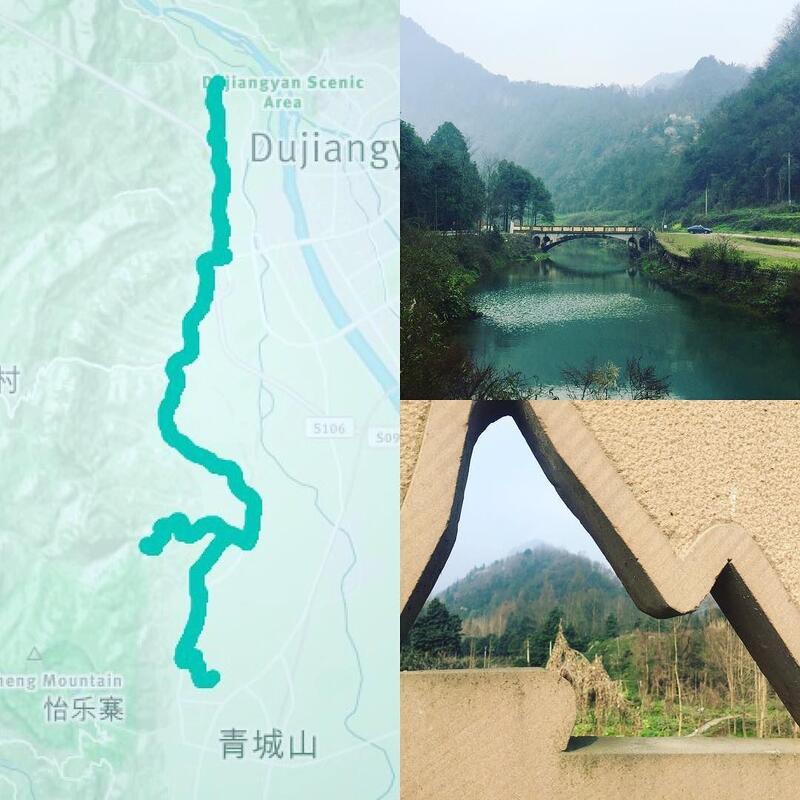
Having a coach and a program was a huge help. It kept me accountable for completing the runs, gave me a number of clear objectives to complete, and provided me with a community and coach to check on my progress and tailor workouts accordingly. In particular, I had two bouts of travel sickness during my training that set me back. Fortunately Nathan was able to adapt my training so I was ready all the same.
One important bonus of having a coach and running team is that I could ask questions or vent my worries. Getting answers from experienced runners can keep you level headed. Running is also physiological so having support is critical too.
Following nearly a half year of formal training, I was nearly there. Just a few more weeks left and one last place to train before I returned to my mountain for my first marathon.
Finding Air
Xichang, China (March 2017):
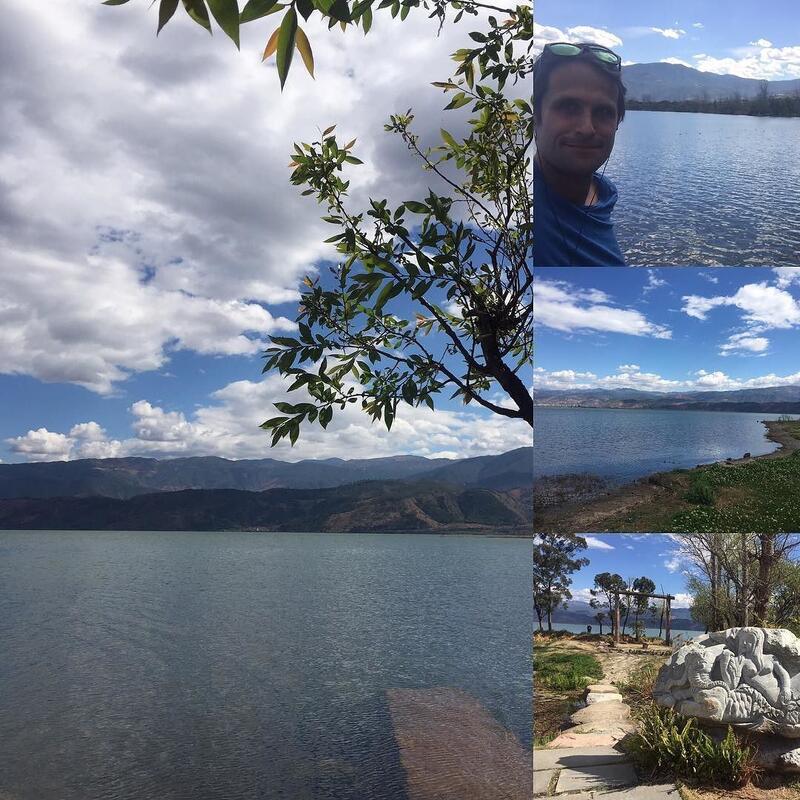
As I returned to China in late February from another trip, I was worried about my final training and about air quality. Air pollution is a big problem in China.
Unless it’s for work or family reasons, I don’t recommend you visit China in winter since that’s typically when air pollution is worst throughout the country. September and October tend to be the least polluted, and late winter tends to be the worst since most of China burns coal to support their heating and power systems. It’s difficult to predict air quality since it depends on wind and rainfall too.
Unfortunately the winter of 2016-2017 was a bad one, especially compared to the previous winter of 2015-2016, where regular rainfall and winds kept the air fresh in Qingchengshan. I spent most of December, January and February abroad, but as my marathon date neared it was time to get back to China and do my final training. Unfortunately the air quality wasn’t helping me, and I was starting to get jittery.
I was serious about my training. So, instead of complaining about the air and getting stressed out, I took a trip. I headed to an even more rural place. I went south, following one of the most amazing mountain highways in Western China to Xichang in southern Sichuan province.
Xichang is a quiet town known for its mountain lake, temperate climate, and its breezes. The area is the traditional home of the Yi or Lolo People, an ethnic group with some relation to Tibetans. Xichang is also at the crossroads to Lugu Hu, one China’s most famous natural wonders on the border between Sichuan and Yunnan. The city is also close to China’s spaceport where rockets are regularly launched.
Most importantly Xichang is known for its pristine air, and it was around Qionghai Lake where I’d do several long runs in preparation for my 42k attempt.
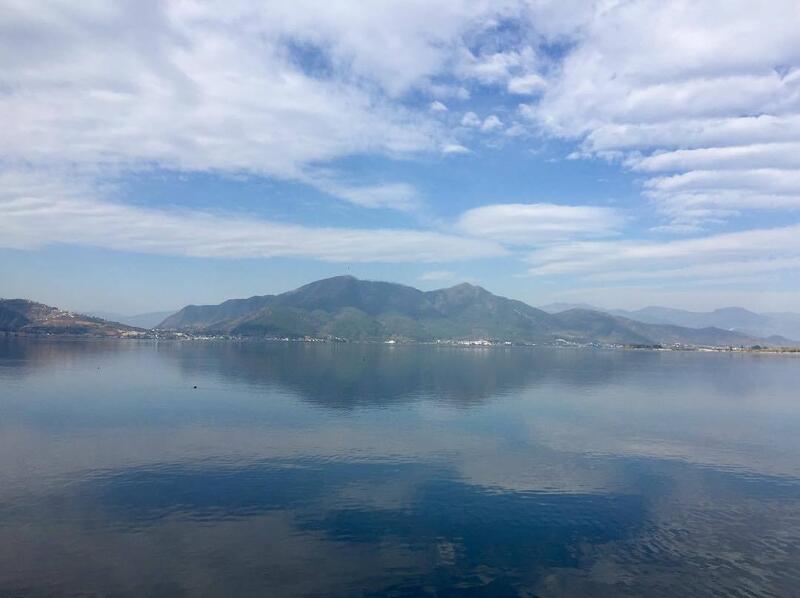
One of the most important aspects in training for a marathon is building up a significant endurance base. Most first-time marathon runners take 4 to 5 hours to complete this distance. This is both a long time on your feet and significant impact on your body. So, training for a marathon is a combination of training your heart and lungs to power you forward and developing the bones, muscles and tendons to support too.
Fortunately the process of getting ready is progressive, and it largely translates to increasing weekly volume and the distance of your long run. In my case, the majority of training runs were around 1 to 2 hours and a distance of 10 to 15k. As I neared the end of my training we increased the time and distance, and my final runs around the lake were over 2 hours and each over 20k.
The other great aspect of my trip to Xichang was that I stayed at a guesthouse that included not only a place to speed and internet but three meals per day. I could focus on my work and training while my meals were covered. The cook was Sichuan so I got a lot of tasty treats too!
Probably the most important change during these final weeks was mental. I was well-fed, I was getting good exercise and sleep and, mentally I was relaxed and stress-free. Not only did this trip give me good air but it made me appreciate the improvements we can make when the situation is just right.
The Race: The First Half
Dujiangyan, China (March 19, 2017):
The day of the race had arrived.
The previous day I had gotten my race packet, which along with a jersey, tracking chip, and my race number, included ironically enough a bit of Sichuan Spicy Sausage. I had to laugh since, while this was a very representative food in the region, it is probably the least likely thing you’d want to eat during a race!
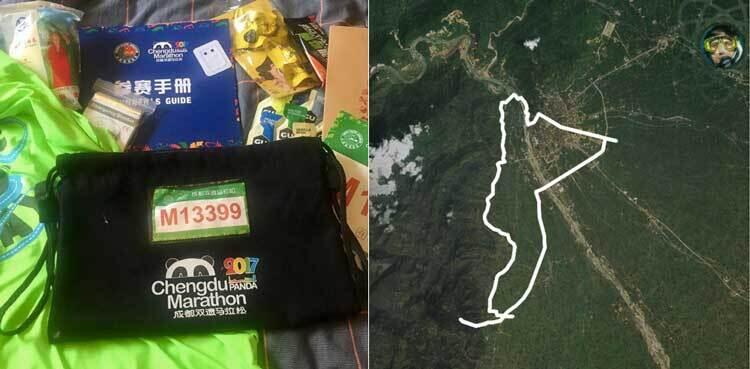
On the morning of the race, I awoke early to get some coffee and to get some toilet time. One of the worst things that can happen on a race is a bowel movement mid-race. So, following the advice I’d read, I made sure I did a “Number 2” before heading to the race.
Admittedly, I hadn’t slept great the night before. I’d spent time preparing my things, thinking through my pace goals and evaluating how the day would go. I’m an analytical guy so my mind was churning on the numbers I could calculate and control, at least in my head.
For better or worse, I hoped my training would be enough. Though being that this was my first marathon and that I didn’t have much experience to go on, I merely hoped for the best.
My main goal was just finishing. I told myself again and again half-jokingly and half-seriously, “Don’t Turn Left at 24k. Don’t Turn Left.” It wasn’t glorious, but this would be my race mantra.
Following a breakfast of toast and peanut butter, I headed to the race which would start at the stadium in Dujiangyan about 20 minute drive from my house. The day was cloudy and cool, and rain was threatening.
Thousands of runners had already gathered as I checked-in. I could feel a bit of collective and personal nervousness as I did a few warmup laps and dynamic stretches. My legs felt good.
The event, while almost exclusively in and for Chinese, was well-organized and friendly. There were lots of volunteers and support staff at the start point as well as throughout the course. In spite of the rainy weather, runners were cheered and celebrated with music throughout the morning. There was definitely no lack of enthusiasm on race day.
Along with the other runners, I walked towards the gate where the race would begin. We were greeted by a mix of government officials and local personalities who took us through an amusing warmup routine. Like much of life in China, this was a show, and the main attraction was showcasing the local city, government and sponsors.
As one of the only foreigners amongst hundreds upon hundreds of Chinese, I received a fair share of looks and greetings. I received a few questions about my expected time, and there was plenty of looks and comparing about fellow runners’ shoes, clothes and gadgets. I too had come prepared, sporting my running shoes, energy gels, phone and Apple Watch for tracking.
Bang! went the starting horn and we were off. The crowd of runners surged forward as we passed the first digital checkpoint.
Like many of the other runners, I started fast, dangerously fast. My pace and energy carried by a mix of the crowd support and adrenaline. My pace matched my fellow runners. I felt great, energetic and confident.
My coach had set my race strategy that was to guide me towards the final 10% of the race at which point, as he said, I was on my own, as he had said.
Overall, I was aiming to maintain a slow start of around 6:25 per km, before increasing my pace midway through the race. Unfortunately, like most first-time marathon runners, I let the start of the race pull my pace and I was running at 5:30 / km. My heart rate rose along with this quickened pace. This would cost me later, but for now, the rain had started and we were weaving through one of the main boulevards of Dujiangyan.
Groups of dancers and drums motivated us through the first kilometers. Crowds along the road cheered us on and even added extra enthusiasm as me, a foreigner would pass.
As we edged out of downtown, the road narrowed and we entered into the historical and tourist area of Dujiangyan. Dujiangyan is famous for its ancient irrigation system that was originally built around 256 BC for flood control and remains in use today.
“Am I going to fast?” I wondered as I left the tourist area and crossed the first of a series of bridges over the Min River (Minjiang), which is a major tributary of the Yangtze. The sound of the powerful water added to the cheers and footsteps. Along the side were local Chinese dressed in period pieces, adding a bit of magic.
I had run about 20% of the distance so far, and I was feeling great. My confidence was so high I started to wonder if I would be able to break my planned time. My fellow runners and surrounding scenery kept my energy level high, and I ignored my pace guidelines and elevated heart rate a bit longer, preferring to enjoy the spirt of my movement and joy of a collective run.
Around 10km we finally crossed over the river and began running along the mountains, an area I’d been training along all year. Its a more or less flat stretch of road that goes almost 18k and passes along a Panda Sanctuary, Mount Zhaogong and farm fields, before ending at the foot of Mount Qingcheng.
Over this stretch my elevated pace would continue. The rain would continue too, but in the back of my mind, I knew that my neighbors and a few friends would be waiting for me at 24k, so I kept up this pace. I didn’t want to be late or slow. I was intent on getting there, and I wouldn’t turn left.
A few kilometers away from my home, I got a call. “Where are you at?” a friend of mine asked in Chinese.
“About 10 or 20 minutes away,” I said in Mandarin as I ran and even increased my pace slightly too.
As I neared the 24k sign, I was surprised at what I saw. There were signs and a small crowd for me. Many of my local Chinese neighbors who I barely knew had come out to lend their support to my marathon run. I paused to take some photos in front of the group and their signs.
I had made it to 24km, and I hadn’t turned left.
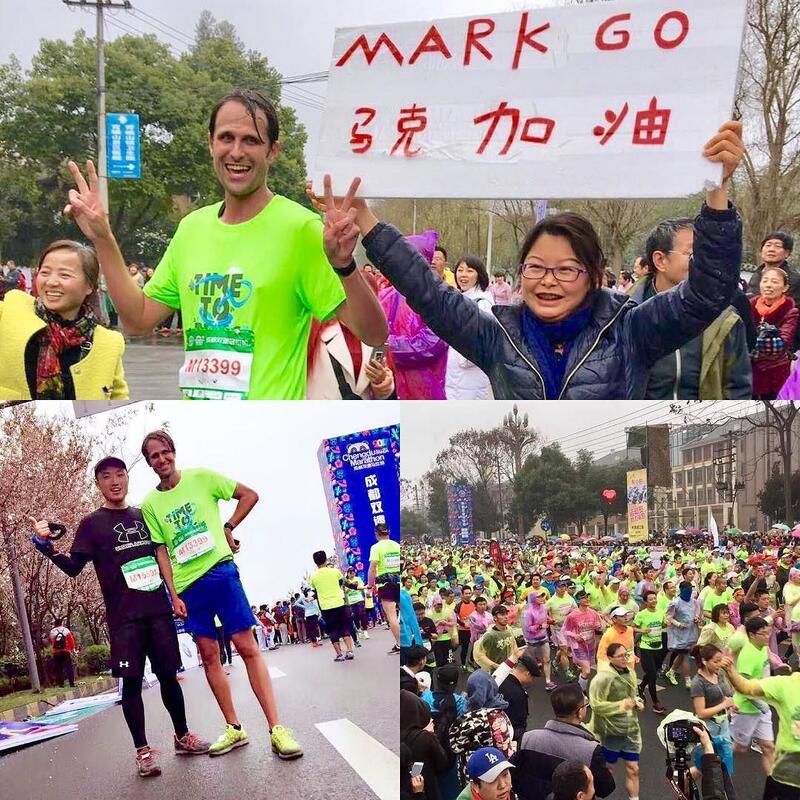
The Race: The Second Half
Qingchengshan, China (March 19, 2017):
As I continued onwards and left my supporters, an emotional swell caught me. I hadn’t expected so many people to greet me, and combined with the months of effort and the journey so far that day, a strong emotion had struck me: a mix of connective gratitude and deep human capacity.
Unfortunately my body started to fail me here, and I paused again. I was tired. My legs were aching. I had made it more than 50% through my first marathon and I hadn’t given up at kilometer 24, but this effort had cost me too. I had expended a lot of energy and fuel reserves running at this higher pace through the first half of the race. I wasn’t sure I could go on.
Before me was one of the biggest challenges of the Chengdu Panda Marathon: the elevated hill section towards the gate of Qingchengshan.
Qingchengshan or Mount Qingcheng is one of the most important centers of Taoism (Daoism) in China and many Taoist myths and history connect to the site. The mountain has 36 peaks and many paths to explore on both the front and backside. Many Chinese tourists take a small bus to the top, but we would be running it.
Rising at a grade of 3-10% and an elevation gain of 100 meters, the five kilometer stretch from KM 25 to KM 30 at Qingchengshan Gate represented one of the most challenging aspects of the marathon. This wasn’t my first time up this path, but it definitely was my most tiring. Following 25km, my legs were tired and I was mentally struggling too. Slowly but surely I continued upwards to the mountain gate as runners both right and left slowed on the ascent.
The next two hours of my marathon run were a bit of a blur. Both the path and the effort were quite different for the second half of the marathon. The day remained overcast and cloudy, as my pace slowed.
The road had left the natural and historical and we returned to Dujiangyan along the main thoroughfare. It was a straight-shot back but a long one. The crowds had thinned as I struggled through the final 15 kilometers back to the start point.
While the first half of the marathon had been characterized by enthusiasm, the second half would be one of slow struggle. While in terms of nutrition and fueling I felt find, I had hit a kind of “wall.” It wasn’t the proverbially wall where I couldn’t go on and lost all energy, but it was a limit. I was still well-beyond my previous training distances and much of the remaining steps would be hard fought.
Fortunately, one markedly positive thing changed in this last section and that was the support of fellow runners. As we pounded our way forward it was clear that it wasn’t about who would win or lose but about sharing the spirit of doing a bit more with our bodies than normal.
As we edged up the wide boulevard towards Duijiangyan, several runners offered words of support in English and Chinese to keep going, and I eventually settled into running with a Shanghai guy. In a mix of English and Chinese, we shared our experience about running and lamented how hard these last several kilometers were. Slow but surely we surged forward as we checked off the last several stages of the marathon and came within sight of the final point.
My body ached in ways unknown, and my mind kept asking what I was doing. Yet I continued onwards. My slow and begrudging pace rose slightly as a mere kilometer remained. I surged and started to run in a hearty attempt to sprint to the finish.
Sigh as I passed the final checkpoint. Forty thousand some steps later and I had completed my first marathon at just under 5 hours.
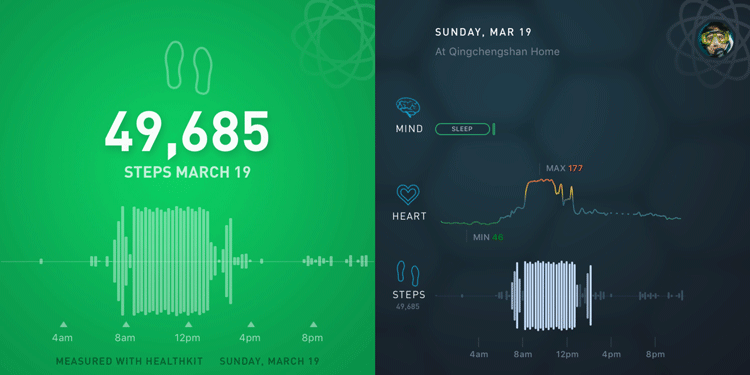
Conclusion and Lessons Learned From First-Time Marathon Runners:
Like many, running a marathon had been on my “bucket list” for awhile. This year I took it off my bucket list and turned it into something else: a wonderful memory and a series of lessons learned.
On a personal level, the biggest lesson I learned was that I’m stronger and more capable than I imagined. If a desk-bound computer programmer can do it, so can you.
Running a marathon teaches you the depth of human capacity, endurance and grit. It’s a lesson and capacity we all need in life.
On a practical level, my biggest running lesson was the importance of sticking to my pace guidelines. I started this run much too fast and it cost me later. Don’t burn out your fuel reserves in the first 5k since there is a lot of road to catch up later.
“We don’t rise to the level of our expectations, we fall to the level of our training.”
This is one of my favorite quotes and guided me on this first marathon and will guide me onwards. While we always want to do better and hope to do better than our expectations, the reality is that it all comes down to our training. If we train well, then we will do well.
Knowing this lesson, I’m still running and still training. I’m not quite sure when I’ll run my next marathon, but I know I’ll be more ready next time than this one. I’ll be better trained and more mentally prepared too.
Ultimately, though, this first marathon was something special. Across so many cities and trails, I pushed myself, and through the mountain paths of my home in Western China, I ventured.
As they say, you’ll never forget your first marathon, and I’ll surely not forget mine.
